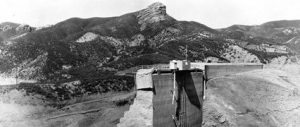When confronted with criticism of proposed dams, hydropower boosters in Asia and beyond have often pointed to the example of American hydropower. If the US dammed their rivers, the argument goes, then why shouldn’t we?
“Look at all the hydropower in the world,” said Viraphone Viravong, a vice minister in Laos’s Ministry of Energy and Mines, at an October forum on that country’s controversial dam plans. “If [these dams] are so bad, why don’t you decommission all of them?”
In an attack on opponents of Chinese dam plans in the country’s water-rich south west in May, Zhang Boting, deputy secretary general of the China Society for Hydropower Engineering, also pointed to the US to show that dam cascades were common practice, stating (incorrectly) that the Tennessee River alone has 70 hydroelectric dams.
The US has learned quite a lot during a century of dam building. While many projects have yielded valuable energy, flood control and irrigation benefits, hydropower advocates abroad often fail to note how much money and effort the US has spent undoing the damage of poorly conceived dams.
The US demolished its 1,000th dam in 2011, with 430 removed just in the last decade. Removing dams is expensive – sometimes astonishingly so – but government and environmental leaders alike say that some dams prove simply too harmful to keep.
To countries just beginning to experiment with large-scale hydropower, US scientists, environmentalists and government officials all caution: don’t make the same errors we did.
"We’ve learned some hard lessons about what happens when you make certain infrastructure decisions,” US secretary of state Hillary Clinton told a gathering of Mekong region leaders in July. “I’ll be honest with you, we made mistakes.”
This era gave birth to the country’s two most valuable sources of hydropower: Hoover Dam, completed on the Colorado River in 1936, and the Columbia River’s Grand Coulee Dam, finished in 1942. The dams remain the country’s largest hydropower producers (proof, many critics of new dams contend, that the best sites were taken long ago.)
Starting in 1960s, however, dam building ran out of steam. A raft of federal legislation, such as the Wild and Scenic River Act of 1968 and the National Environmental Policy Act of 1969, forced developers to take rivers’ ecological benefits into account before plowing ahead with construction.
The US government also had to contend with a public less tolerant of dams’ high construction costs and increasingly concerned with environmental protection.
“We went on this dam building binge in the early mid 1900s, and then we realised, ‘Wow, we’ve dammed most of our best rivers and that comes with serious costs,’” said Amy Kober, spokeswoman for the environmental group American Rivers.
The trouble with dams
Dams, by definition, turn rivers into reservoirs. This has profound ecological implications.
Changes in sediment patterns can have consequences thousands of miles in either direction of a dam. A few degrees’ temperature change can destroy whole ecosystems. Blocked fish migration can be disastrous for the species themselves and the humans who depend on them for sustenance.
A legend among some Native American tribes in the Pacific Northwest holds that the Elwha River’s salmon were once so plentiful a man could cross the river by walking on the fishes’ backs. The river has lost some 90% of its salmon since it was dammed in the early twentieth century.
In addition, as imposing as a concrete behemoth like Hoover Dam may seem, dams in fact have a limited lifespan. Maintaining them can be staggeringly expensive – and as decades pass, it can be increasingly hard to identify the federal, state or local entity responsible for its care.
“We’ve ended up with a lot of dams that aren’t serving economic needs anymore but nobody’s really responsible for them,” said Jane C. Marks, a professor at Northern Arizona University who helped rehabilitate Arizona’s once-dammed Fossil Creek. “There are rivers that are damaged for really no good reason.”
The current trend toward dam removal began with the Edwards Dam on the Kennebec River in the northeastern state of Maine. Built in 1837 for hydropower and navigation, the dam ruined fish stocks and transformed the once-lush region into a symbol of industrial decay. The mills along the river eventually closed, rendering its small amount of hydropower generation obsolete.
When the dam’s federal license came up for renewal in 1993, a coalition of environmental groups, state and federal agencies lobbied hard for the dam’s removal. After a decade of intense legal wrangling, the dam was taken down in 1999 and the river successfully rehabilitated.
In September 2011, the US launched its most ambitious dam demolition to date – the US$325 million (2 billion yuan) removal of the Elwha River and Glines Canyon dams, the dams that decimated the once-abundant salmon of the Olympic Peninsula.
An era of smarter dams?
No one is suggesting that all US dams should be removed. Hydropower is the second-largest source of renewable energy in the US after biomass. Instead of looking for new sites to build dams, the Bureau of Reclamation is looking for ways to extract more hydropower from existing facilities, Connor said.
Modern technology also enables engineers to build smarter dams than their twentieth-century predecessors – and to be more prudent in choosing whether to build in the first place.
“Countries that are considering new dams for hydropower generation should make careful consideration of the damage that can and will be inflicted upon the environment and livelihoods of many people,” said Rupak Thapaliya of the conservation-minded Hydropower Reform Coalition. “While the intentions of many governments may be good, the actions may not always be based on sound science and that is very important.”
The architects of last century’s dams worked in an era when mankind was fully confident of its dominion over nature. Today, science is making a very different case – one planners should take to heart.
“The lesson for China and Brazil is just: learn from what we’ve done,” said Marks of Northern Arizona University. “You’re developing in a different context – in a world where we’ve realised that resources are finite.”




